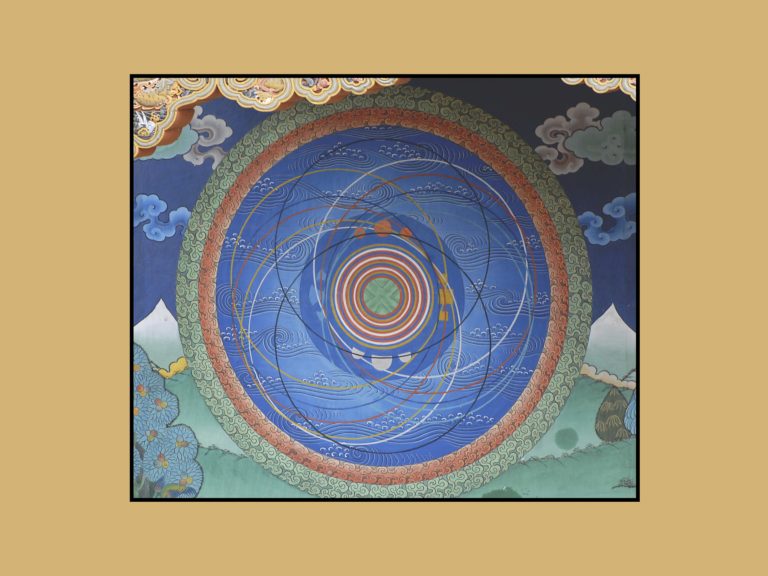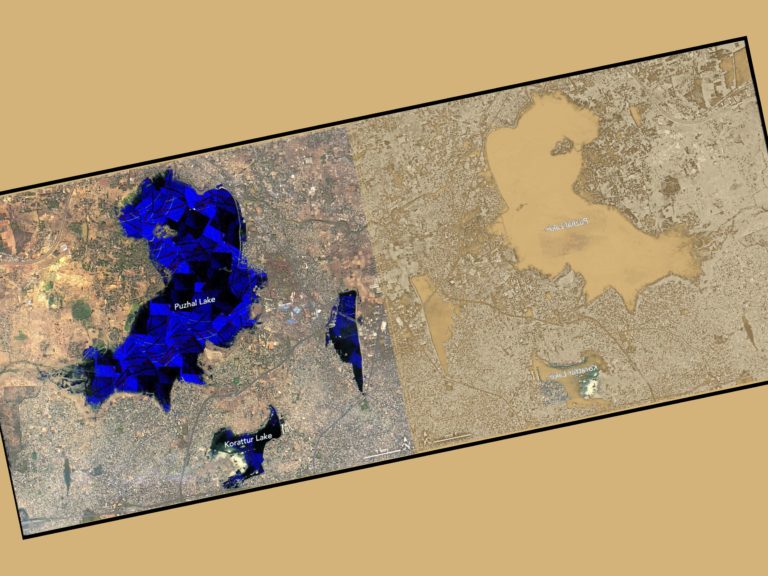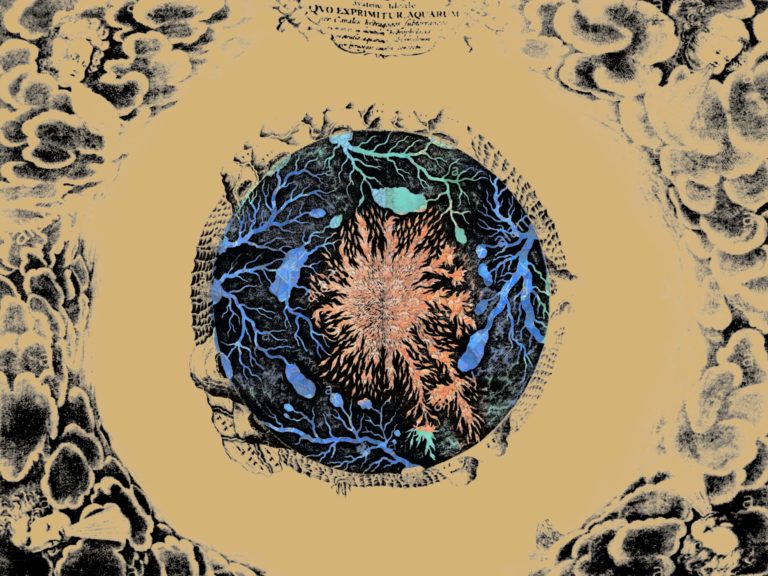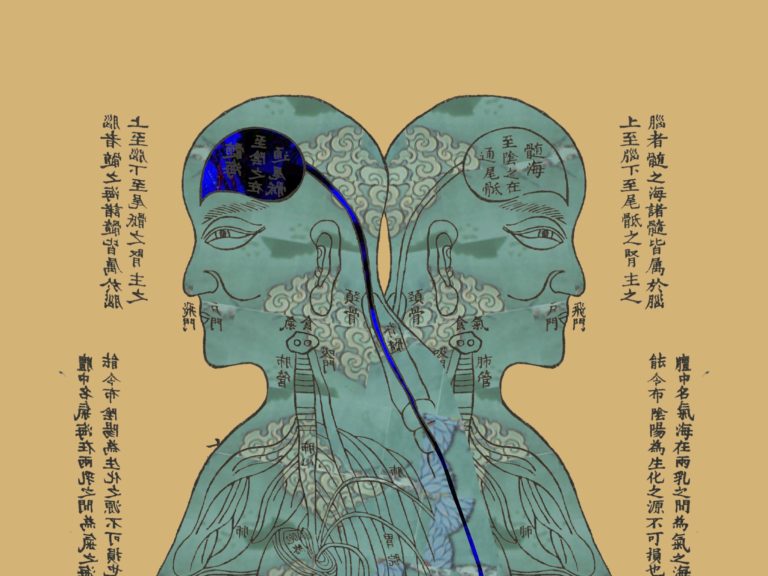The following series is a visual experiment in the comparative movement of fluids across different spatial visualizations. From celestial currents to earthly bodies, we explore the transmutation of water, wind, vapor, soil, bone, and brain. Each post captures the movements between interior and exterior spaces through entities that often escape categories of fluidity, yet fulfill imaginations of fluidity. The objects include circles of wind, fire, water (Huntington), depleting reservoirs (Venkat), water veins and mineral mining (Ballestero), and bone marrow in the brain (Li).




“Oceans of the Wheel of Time” by Eric Huntington // This top-down view of the cosmos of the Buddhist Wheel of Time depicts a remarkable arrangement of two concentric oceans in order to integrate two disparate conceptual systems. Cosmologically, this world comprises successively denser circles of elements towards the center, with a circle of wind depicted at the edge (green ring), a circle of fire inside that (red ring), a circle of water inside that (large blue disc with patterned waves), and a circle of earth inside that (blue circle without waves). Geographically, this disc of earth is equated with the various continents of the world (triads of geometric shapes in white, blue, red, and yellow), and so a problem arises. Continents are surrounded by oceans, not a circle of earth. Consequently, the layer of earth is depicted with a blue disc of ocean imagined atop it, even though paradigmatically the elemental layer of earth is depicted in yellow. Image source: Wheel of Time cosmos mural. 20th–21st centuries. Entrance veranda to main assembly hall, Punakha Dzong, Punakha, Bhutan (photograph by Eric Huntington)
“Hydrolithic Aquifers” by Andrea Ballestero // Aquifers are the movement that the encounter of water with rock makes possible; they are the seepage that their push and pull effects. Privileging movement, the difficult and never frictionless encounter between water and stone confounds our capacity to distinguish between figure and ground. Most people in Costa Rica do not think of underground water as movement. They rather speak of aquifers as underground water veins. One precursor of the idea of a water vein is located in colonial times when Europeans combined Christian beliefs with mining endeavors. Matching the language of mineral mining with a particular appreciation of the body as a theological substrate resulted in the widespread idea that gold and silver are to be found in veins under the surface. Rather than taking rock and water as distinct elements, aquifers push us to keep them together and to ask how doing so redefines what we consider as elemental. What if rather than imagining substances, we considered elemental choreographies? Image source: The interconnectedness of subterranean water as imagined by Anathasius Kircher in Mundus Subterraneus (1665)
“Ocean of Bone” by Lan A. Li // It looked like a brain. Only, it was not a brain. The pocket of space in the head pinched at the tip and stretched through the spine. Only, it was not the spine. The image, titled Zang Fu Mingtang Tu 臟腑明堂圖, suggested an interior view of the body filled with structures that were solid and soft, firm and fluid. This version of the body’s interior was resized and reprinted in Beijing in 1956. Despite its vague genealogy, this Zang Fu Mingtang Tu 臟腑明堂圖 was often associated with either a set of meridian maps from the early fourteenth century, or with an even earlier set of Inner Canon (neijing 內經) or Inner Vision (neijing 內景) treatises. The inscriptions in the head read: “The ocean of Yin bone marrow penetrates all the way down” 髄海至隂之在通尾骶. So, inside the head/brain through the spine/back was bone marrow. More specifically, this was stuff in the head that moved around while being guarded and guided by Yin. This image of a solid and soft, firm and fluid interior of the body might seem familiar. It showed many different kinds of things in motion. Like neo-Hippocratic bodies from the medieval and early modern period, this was an expressive body upon which one could make impressions and initiate movement. Image source: Zhenjiu Jicheng 針灸集成 (Beijing: 人民卫生出版社影印 People’s Health Press, 1956.)